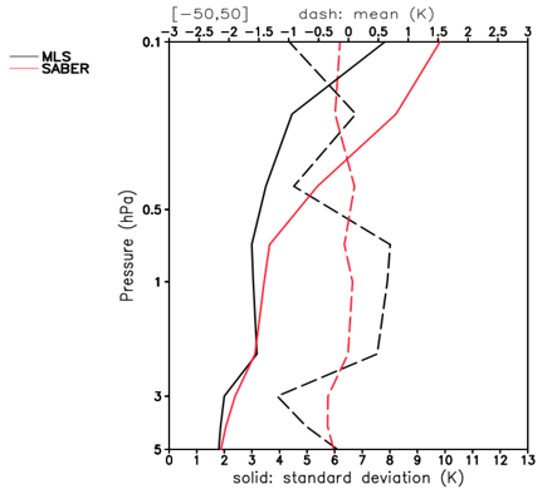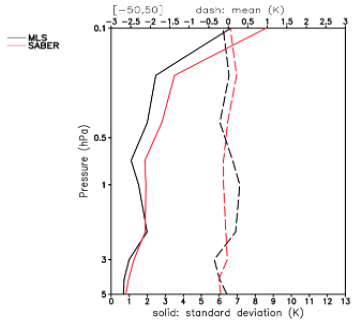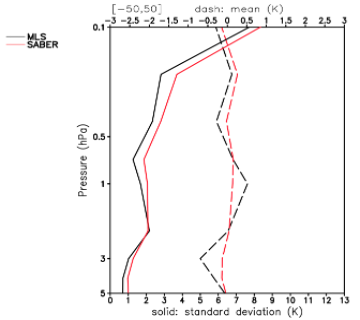Whole Atmospheric Modeling
The whole atmosphere is a fluid continuum from the ground to the edge of space.

The whole atmosphere is a fluid continuum from the ground to the edge of space.

The whole atmosphere modeling group in 675 is working with the Goddard Earth Observing System (GEOS), and its data assimilation technology (JEDI) to provide support for NASA missions and retrospective analysis in the whole atmosphere. The ITM whole atmosphere modeling group goal is to advance the understanding of the coupling of terrestrial with space weather.

The group is tasked with incrementally and sequentially expanding the vertical domain of GEOS to:
Key science drivers of the Whole Atmosphere group are:
In the last two decades the ITM observations of dynamics and ion-neutral composition demonstrated a great potential of satellite missions (TIMED, EOS Aura, AIM, GOCE, CHAMP, VIIRS, GOLD, ICON, COSMIC-2, GRACE, and GRACE-FO) to explore the coupling between vertical layers, hemispheres and regions driven by multi-scale dynamics. These satellite data have been used to evaluate the Space Weather (SW) model predictions in the ITM and its variability. The whole atmosphere modeling and data assimilation group in partnership with the GMAO/GSFC will support the current, novel and planned NASA ITM missions by examining the impacts of new instruments and observing strategies on the analysis and prediction of space weather.

We will also estimate the impacts of proposed new ITM observatory, represented by GDC and DYNAMIC missions, on the space weather predictions using the OSSE-ITM in the whole atmosphere modeling framework. OSSEs for the GDC+DYNAMIC ITM observatory will assist to assess different designs of the new satellite systems before their instruments are actually built or deployed. The OSSE-ITM system will be based on the GEOS-OSSE infrastructure of GMAO employing the novel JEDI framework recently implemented and tested in GEOS-DAS for the Earth Observing System.
| Past Projects | |||
|---|---|---|---|
| FY24 STG | TBD | ||
| FY24 IRAD | The goal of this IRAD proposal is to bridge a critical component of space weather modeling that is currently missing at GSFC. NASA heliophysics data have been used only sporadically with other Earth observations to build a whole Earth system view that can lead to (1) a climate record from the surface to the upper atmosphere, and (2) products that can be utilized in support of planned spaceflight missions. The purpose of this project is to add SABER mission data available for the past 20 years to the data assimilation cycle of the Goddard Earth Observing System (GEOS). This will extend the validity of GEOS to the mesopause and is the first step toward including other heliophysics observations in a vertically extended domain of GEOS. | ||

|

|

|
|
| These panels illustrate to effectiveness of assimilating either MLS-T or SABER-T. Panels show means (dash) and standard deviations (solid) of Observation-minus-Background fits when: (L) Neither data are assimilated (both passive); (C) only MLS is assimilated; (R) only SABER assimilated. Notice that assimilating either MLS or SABER improves the fit of the corresponding passive data. | |||
| Current Projects | ||
|---|---|---|
| FY25 HISFM | TBD | |
| FY25 IRAD | This project aims to produce a historical dataset of atmospheric neutral winds in the mesosphere and lower thermosphere (MLT; ~80-100 km altitude) in formats ready for integration into the vertically extended GEOS model. We will also collaborate on collating a homogenized and quality-controlled record of Earth observations. | |
| Dynamic Mission | TBD: DYNAMIC-X & DAPHNE | |